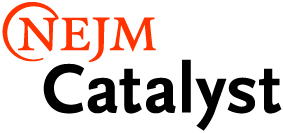Headline
An intervention supporting caregivers of adults with chronic medical and functional needs can generate cost savings and improve outcomes for Medicare Advantage enrollees and their caregivers.
Context
Individuals with complex needs who have family caregivers to support home-based care experience improved health outcomes and lower health care utilization. Their caregivers, however, often experience high amounts of stress. Despite significant policy changes to support family caregivers —including the expansion of Medicare Advantage (MA) supplemental benefits in 2019 — there has been low uptake of caregiver support programs by health plans and health care organizations that serve MA enrollees. This is likely due to a lack of funding, limited implementation guidance, and few cost-benefit analyses of these programs. This article offers a clinical and business case for family caregiver supports through the Caring for Caregivers model to MA plans and health care organizations that serve MA populations.
Findings
Estimated cost savings from the three components of the Caring for Caregivers model — peer support groups, integrated caregiver and patient workflows, and virtual assistants — were calculated based on data from previous studies. Estimated savings are outlined below:
- Peer support groups, which target distressed adult caregivers, could generate average net savings of around $861 per caregiver per year and $1,461 per patient per year. MA plans would most likely achieve a positive return on investment, and net savings scaled to MA plans were approximately $1.4 billion over one year.
- Integrated caregiver and patient workflows, which focus on adults 65 years or older with dementia or cognitive impairment, could create an estimated net savings of $3,168 per patient per year. Scaled to all MA enrollees with dementia or cognitive impairment, net savings could be upwards of $1.8 billion over a year.
- Virtual assistants, which target older adults with multiple chronic conditions, could generate a net savings of $492 per patient per year, with a reported cost of only $3 per year — indicating almost a 100 percent chance of positive ROI for MA plans. Scaled to all MA enrollees with three or more chronic conditions eligible for this intervention, the net savings could be $1.86 billion yearly.
Takeaways
These cost simulations show the strong potential of the Caring for Caregivers model in reducing health care costs and improving outcomes for MA enrollees and their caregivers. The three components of this model can be implemented together or separately, and the adoption of this model or one of its components could have benefits for MA plans and capitated health systems. MA plans can consider offering the model components to their enrollees through expanded supplemental benefits as delivered by community-based organizations.


